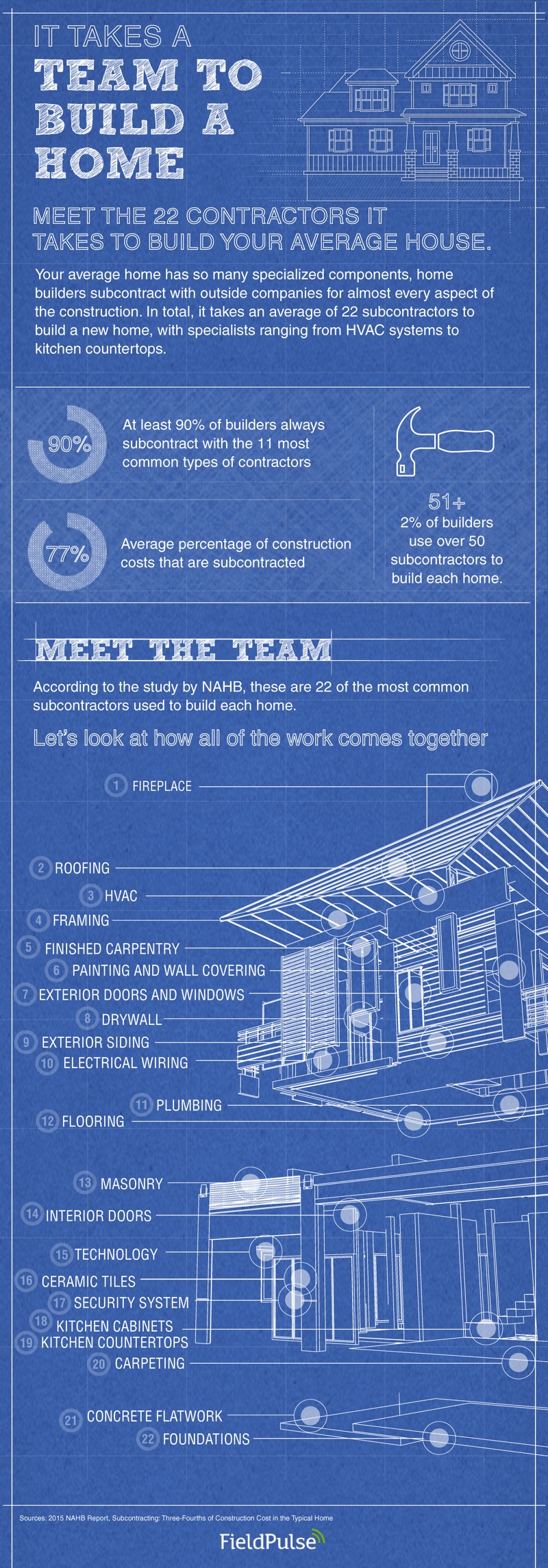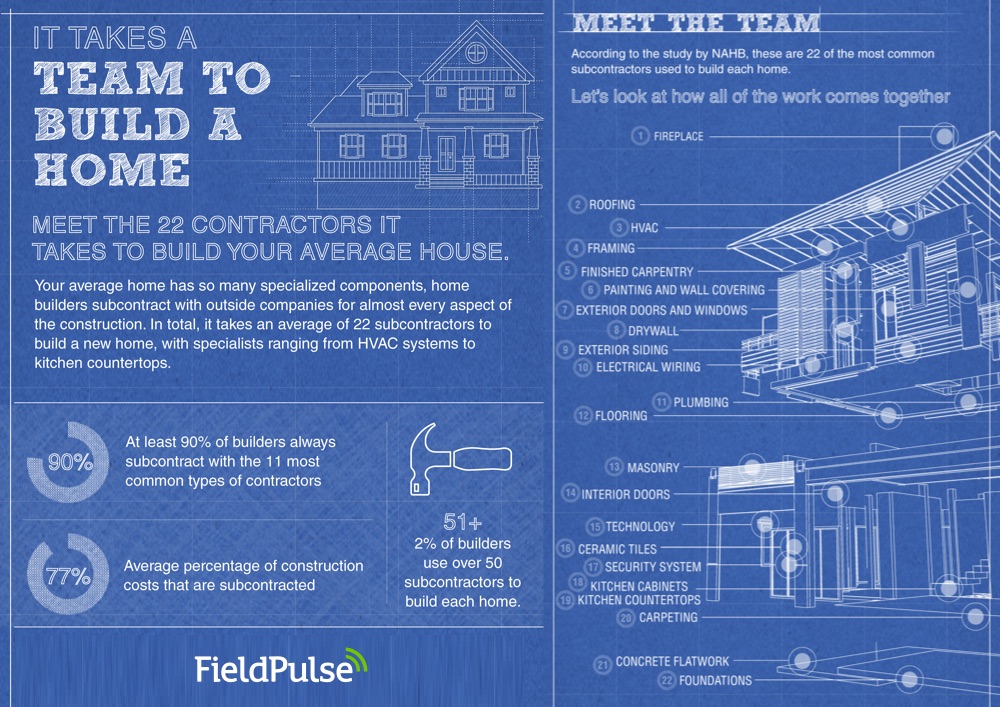A recent report discussing the costs and scope of subcontractor use within the residential construction industry has provided the public with a glimpse into the complexity of modern home building. Authored by Dr. Paul Emrath of HousingEconomics.com, the report’s most shocking finding is that the median home construction project can expect to see almost two dozen subcontractors involved before completion. Considering that subcontractor costs are critical to builders’ bottom line and are often subject to changes in labor law, the prevalence of subcontractor use is a critical issue for residential construction.
How does this impact the home buyer?
While subcontracted work adds to the cost of building a home, the end result is better for the home buyer. Home builders that build just a few homes per year are unable to retain specialty contractors for all 22 of the roles such as hvac contractors or electrical contractors. Rather than relying on generalists to perform these specialty jobs that require advanced certifications, schooling, and skill, home builders typically subcontract these jobs to specialists best equipped to perform the job.While this increases the cost of the work performed, a specialist will almost always be better than a generalist at performing skilled work in their field. Home builders using “in-house” employees to perform specialized tasks outside of their expertise often leads to lower quality work and a liability in the long term.Would you trust in-house home building contractors to install doors, windows, and siding? You likely would. But would you trust them to perform electrical or plumbing work? They will most likely not be qualified and certified for that work, opening the homebuilder to legal risk.

Meet the 22 Subcontractors that Build Your Home
Subcontractor Roles
Using subcontractors for construction specialties is the norm, with greater than 95% of contractors opting to subcontract out carpeting, HVAC, electrical wiring, and plumbing.Even the least subcontracted specialties, such as finished carpentry, weren’t handled in-house almost 70% of the time.As most home construction jobs will use many subcontractors, it’s no surprise that subcontractor work is typically 77% of the total home construction cost.
An Increasing Trend
The demand for subcontractors for home construction is high, and increasing. During housing construction booms, subcontractors are in even greater demand, and subcontractors can make up an even greater share of the total cost. Specific specialties such as constructing fireplaces and installing kitchen countertops are being subcontracted out more frequently over time, with nearly 10% more builders opting to subcontract in 2015 than in 1999.However, the demand for subcontractors isn’t just a result of many small builders taking on jobs they don’t have the resources for.Large construction companies are even more likely to use subcontractors than hire specialty contractors in-house. Builders taking on more than 25 new projects per year subcontract out a whopping 87% of the total work required on average. The smallest builders, who start fewer than 5 houses per year, are the least likely to formally use subcontractors, but still end up using them more than half the time.The picture is clear: builders of all sizes rely on subcontractors.The subcontracting culture carries a couple of caveats for home builders and subcontractors alike. Given that builders will have to coordinate with dozens of subcontractors over the course of construction, keeping track of which subcontractor takes care of which specialty and when is critical for smart work assignments and effective accounting.From the perspective of a subcontractor, keeping track of a long list of customers and scheduled jobs is essential. Managing subcontractors and clients effectively will continue to be a critical issue for home builders moving forward.

Meet the team that builds your home
